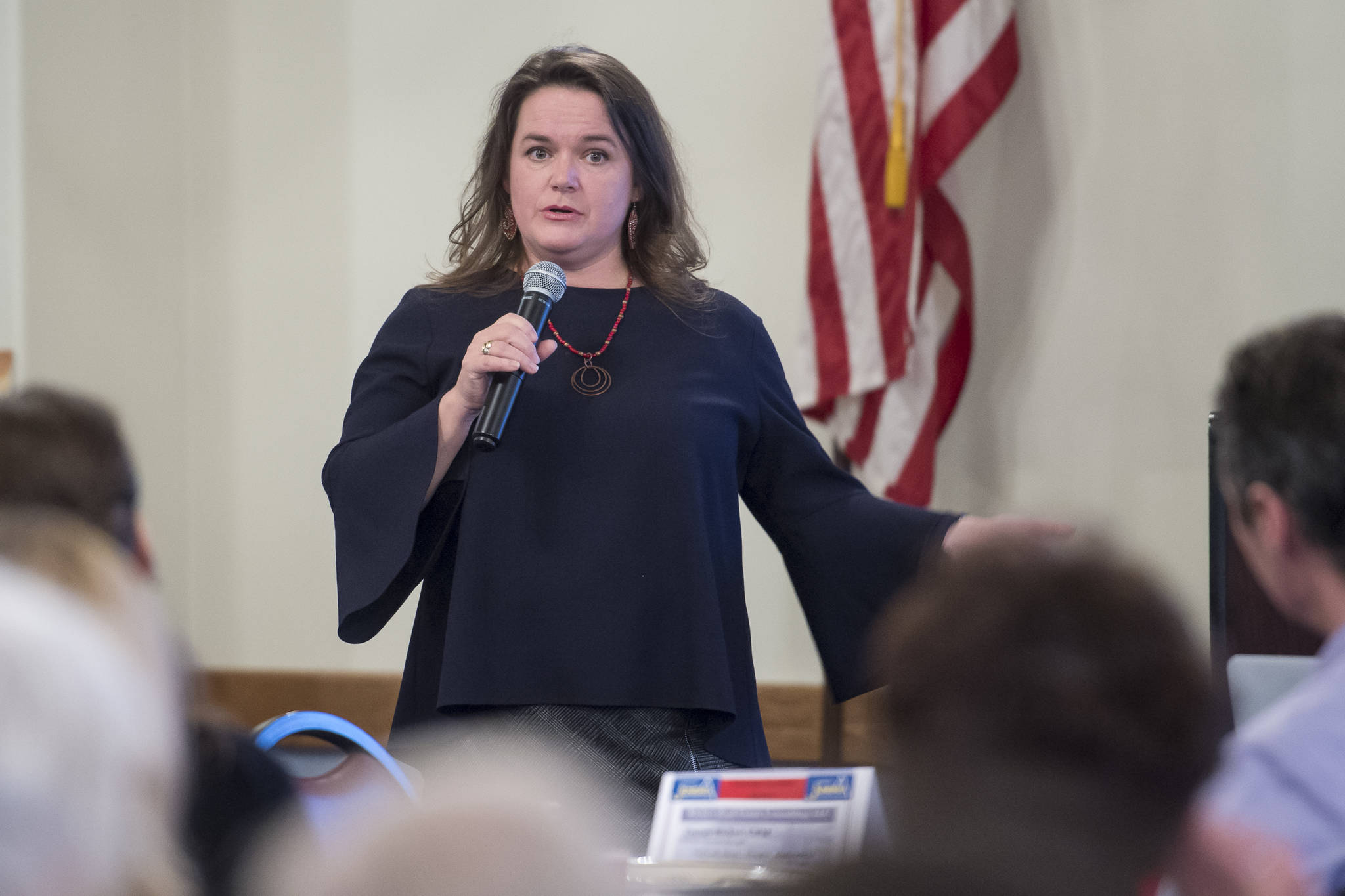Key economic indicators are trending downward in Juneau and government job losses are the key reason, according to a presentation from Rain Coast Data Director Meilani Schijvens on Thursday.
Schijvens was unveiling her annual “Southeast Alaska by the Numbers” study (done for Southeast Conference) that examines industries, communities and overall trends in the region. The presentation was very similar to the one she gave a year ago, when jobs, earnings and population all decreased across all of Southeast.
The silver lining in this year’s presentation was that jobs and earnings both increased in Southeast as a whole.
“We’re doing a bit better (than 2016),” Schijvens said. “It wasn’t a hard year to beat.”
Juneau did not follow suit, as the capital city saw decreases in jobs, earnings and population in 2017. There were decreases of 200 jobs (1.1 percent), $9 million in earnings (1 percent), and 450 people (1.4 percent), according to Schijvens’ presentation.
Schijvens said the biggest reason for the declines in these categories is the continued loss of government jobs (another similarity to per presentation a year ago). Since 2012, Southeast has lost 850 state jobs and three-quarters of those have been in Juneau, Schijvens said.
She chalked government job losses in the region and statewide up to the state’s budgetary struggles. Historically, according to the Rain Coast Data report, oil revenues used to make up 90 percent of the state’s budget. Now, oil covers about 30 percent because prices have dropped so significantly, according to the report. This has tightened the state’s budget (which has been slashed 40 percent since the 2013 fiscal year, the report states), and the state has had to lay people off.
As a whole, Schijvens told the Empire Thursday afternoon, these lost jobs are layoffs as opposed to jobs moving out of Southeast. Schijvens said this trend will likely continue, and Rain Coast Data projects state employment to drop by 2 percent from 2017.
Schijvens projects continued struggles for the seafood, state government, construction and retail industries. She said those in the visitor, health care, mining and tribal jobs industries should have a positive outlook. She said she expects population to continue to decrease.
Bright spots
It’s well known that the visitor industry is booming in Southeast, but Schijvens shed light on a couple other industries that have been doing well recently.
There were 80 more health care jobs (an increase of 2.5 percent) and 90 more mining jobs (an increase of 11 percent) in Southeast in 2017, Schijvens said. Health care wages in the region have increased by $22 million (a gain of 13 percent) since 2014, according to Rain Coast Data.
Schijvens attributed part of the rise in health care jobs and wages to the Affordable Care Act, saying there are many more people in the country accessing health care now than there were a few years ago. She said providers in Southeast have had to raise wages to attract and retain employees to make sure they have enough labor to keep up with the demand for their services.
Both Hecla Greens Creek and Coeur Alaska Kensington mines saw increases in the number of employees, according to Rain Coast Data, though average wages slightly dipped from $104,000 to $102,000.
Mike Satre, the current president of the Chamber of Commerce — and manager of government and community relations at Hecla Greens Creek Mining Company — said in a closing statement to the chamber is optimistic about the future of Juneau’s economy.
“We know that if we have a diverse economy in this community, we have affordable housing, we have a cosmopolitan art scene and we have a great educational system, we’ll get more of those workers to live here,” Satre said. “Having a good amount of resident workers in your community is a community problem and there’s a community solution to it.”
• Contact reporter Alex McCarthy at 523-2271 or amccarthy@juneauempire.com. Follow him on Twitter at @akmccarthy.

